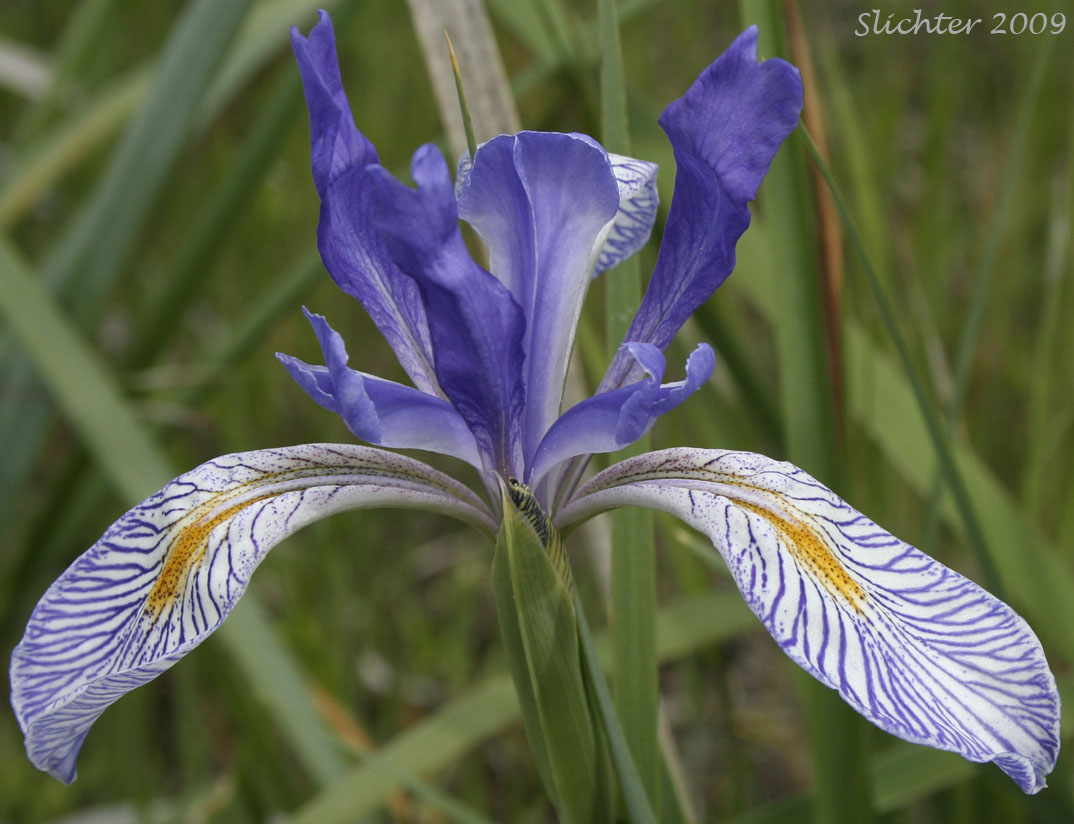

#Blue flag iris full
Performs best in full sun or part shade, in acidic, moist to wet, humus-rich soils.Clumps will spread steadily over time to form colonies. This marginal aquatic plant is also a lovely addition to moist borders. Very handsome in and out of bloom, Iris versicolor is a central landscape plant for the water garden, near ponds and streams.
#Blue flag iris Patch
The falls feature a conspicuously veined white basal patch and a yellow blotch. across (10 cm), adorned with bold purple veining. Branched stems rise from the clump in late spring to early summer, each of them boasting 3-5 bluish-purple flowers, 4 in. The fiber was also woven into nets and ropes to catch fish, deer, and other game.Noted for its distinct upright habit and striking flowers, Iris versicolor (Blue Flag) is a rhizomatous perennial forming a clump of narrow, upright or gracefully recurving, sword-shaped, blue-green leaves. However, the rhizomes are toxic if ingested. For example, its rhizomes were used superficially to treat infections, wounds and ulcers. The Western blue flag iris has been used in many ways. Irises are generally pollinated by bumble bees, large carpenter bees, and sometimes flies and moths. The Iris missouriensis pronounced nectar guides (white and yellow veins on the flower) are an indicator of insect pollination. Like many species, the Western blue flag iris’s habitat is being threatened by land use changes from natural areas to cultivation, grazing, and development.

Iris missouriensis is considered globally secure however it is considered imperial in North Dakota and Nebraska and threatened in Alberta, Canada. Conservation Statusįlower of the Western Blue Flag Iris (Iris missouriensis). irises iris plants nativeplants purple raingarden newjersey Flowers. They are native to the Pinelands and have pale blue to purple flowers from late May - June. The Western blue flag iris makes a wonderful garden specimen and can be easily divided and transplanted. Slender blue flag irises (Iris prismatica) are blooming in the New Jersey Pinelands Commission’s rain garden. The best way to avoid the spread of the pest is to remove the infected plant(s) as soon as the borer is identified and destroy them so that other plants will not become infected. The iris borer lays its eggs in the plants rhizomes, damaging them, and leading to plant health decline. The iris borer is a well-documented pest of this species. The natural habitats of this iris are meadows, hillsides, and foothills. Once established, it is drought tolerant. The Western blue flag iris can live in moist soils in the spring but is intolerant of water soaked conditions into the summer. Iris missouriensis is a perennial that grows throughout the Western US and can thrive in a number of different situations it does well partial shade to shady areas and will also tolerate sun for a portion of the day.

Growing Conditions and Distributionįlower of the Western Blue Flag Iris (Iris missouriensis). Depending on the region, the Western blue flag iris will bloom in the late spring to summer. The flowers are easily identifiable large purple blossoms with white or sometimes yellowish veins. The Western blue flag iris is a handsome beardless iris that grows between 1 and 2 feet tall. Western Blue Flag Iris (Iris missouriensis) range map.


 0 kommentar(er)
0 kommentar(er)
